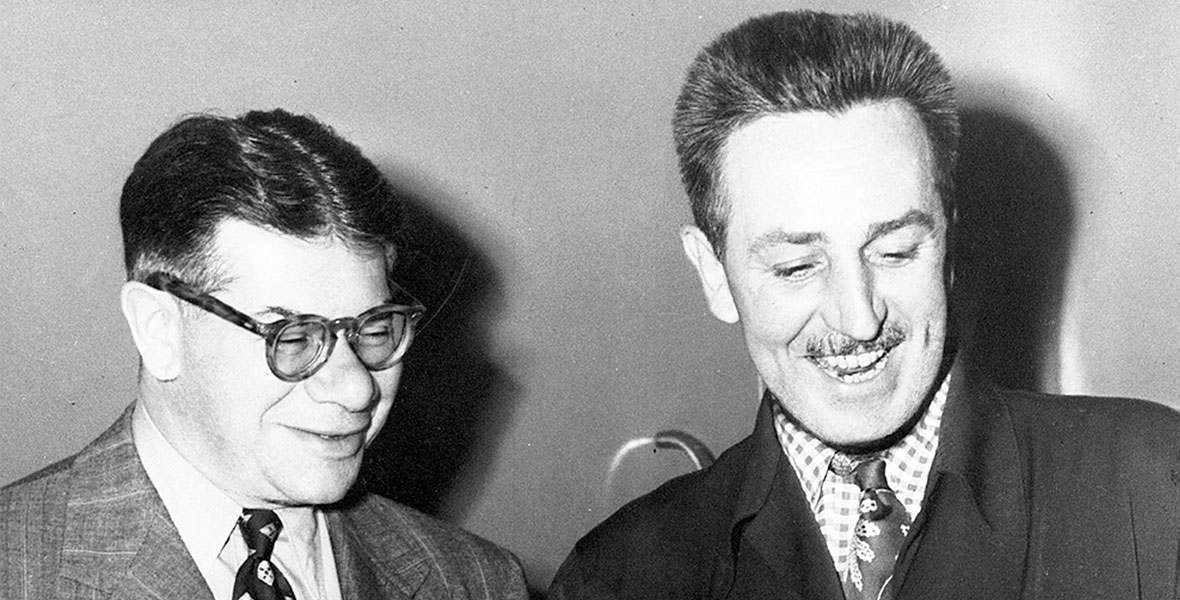(Pictured above on the left, Kay Kamen)
During the Great Depression of the 1930s, President Herbert Hoover promised a chicken in every pot; Kay Kamen, however, promised a Disney character in every home. A stickler for quality, he set an unprecedented standard in licensing Disney character merchandise—books, music, plush toys, and more—and, subsequently, helped transform Mickey Mouse and other Disney characters into megastars.
As Tom Tumbusch, publisher of Tomart’s Disneyana Update, once explained, “Kay Kamen invented the whole licensing industry. Not just for Disney, alone; others followed suit.”
Born Herman Kamen on January 27, 1892, in Baltimore, Maryland, Kay began his professional career as a retail hat merchant. He later entered advertising and, in 1932, the young executive placed a call to Walt Disney. Kay was certain he could sell Mickey Mouse in a new and better way than was being done at the time. After his phone conversation with Walt, Kay immediately boarded a train bound for California. Two days later, he personally met with Walt and Roy O. Disney in Los Angeles; a contract soon followed, naming him the Company’s sole licensing representative.
By 1935, three years after Kay joined forces with Disney, Mickey Mouse products numbered in the thousands. This brought the fledgling Studio much-needed income so that Walt Disney could spin his dreams, including the first full-length animated feature, Snow White and the Seven Dwarfs. When the animated classic was released in 1937, Kay had an extensive Snow White merchandising campaign in place, which was the first of its kind and later copied by other studios.
Tumbusch added, “What made Kay unique was that he not only sold licenses to manufacturers, but made personal calls on department store buyers, twice a year, to promote the Disney product being manufactured. As a result, by 1935, Mickey Mouse ruled in 50 or 60 of the largest department stores.”
Kay helped make Mickey Mouse so popular that companies such as watch manufacturer Ingersoll Waterbury were saved from bankruptcy because of their association with the superstar mouse.
In 1933, when Ingersoll Waterbury introduced the first-ever Mickey Mouse watch, it was such a huge hit that the troubled company was able to increase its dwindling number of factory workers from 300 to more than 3,000. Macy’s department store in New York City sold a record of 11,000 of the timepieces in one day.
Once Kay helped establish Mickey’s mass appeal, companies paid large sums to be associated with the Disney star. In 1934, at the height of the Depression, General Foods paid $1 million for the right to put Mickey Mouse cut-outs on the back of cereal boxes.
After 17 years associated with The Walt Disney Company, Kay died in a plane crash over Spain on October 28, 1949.



